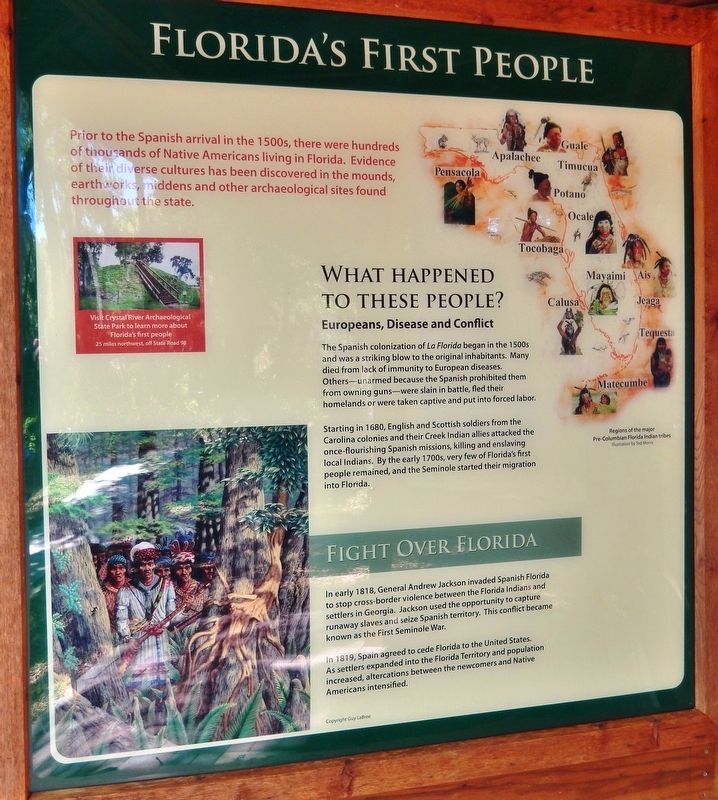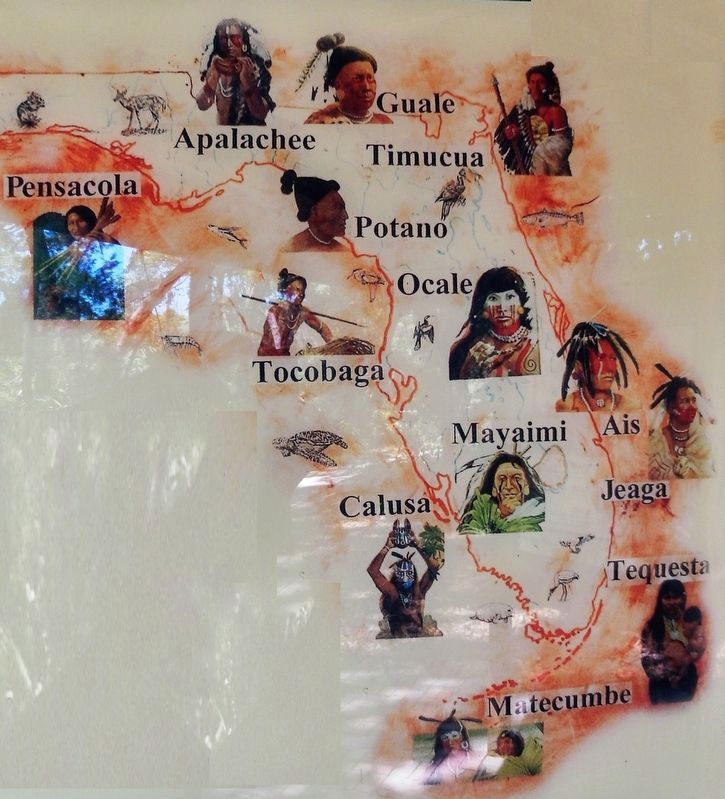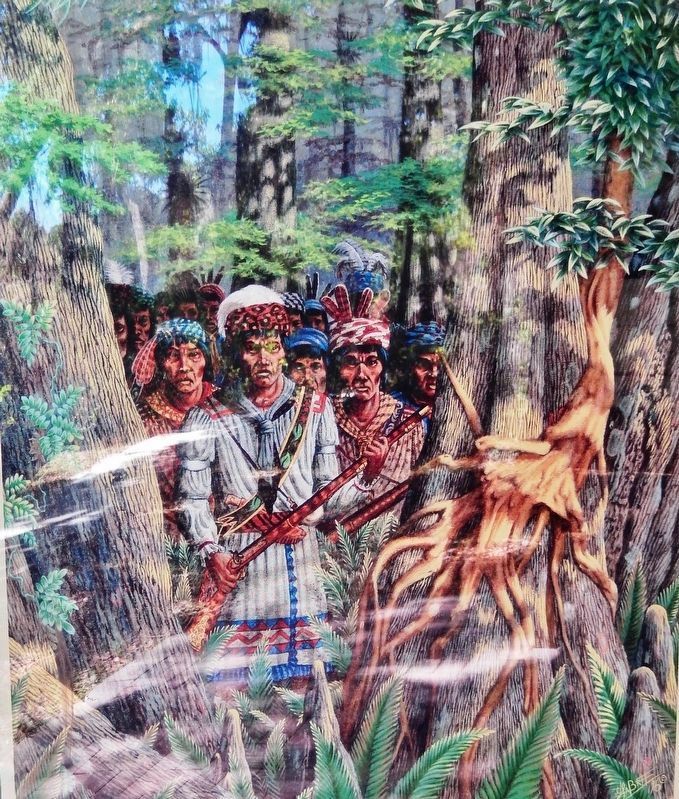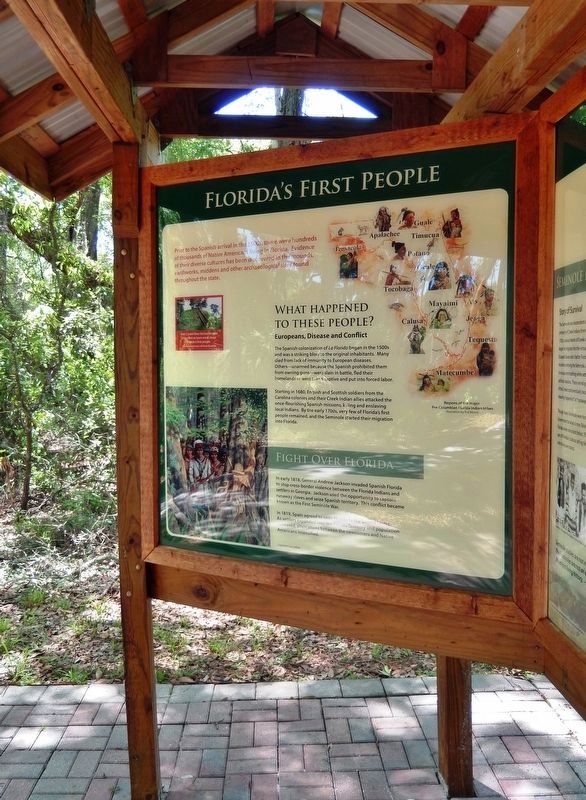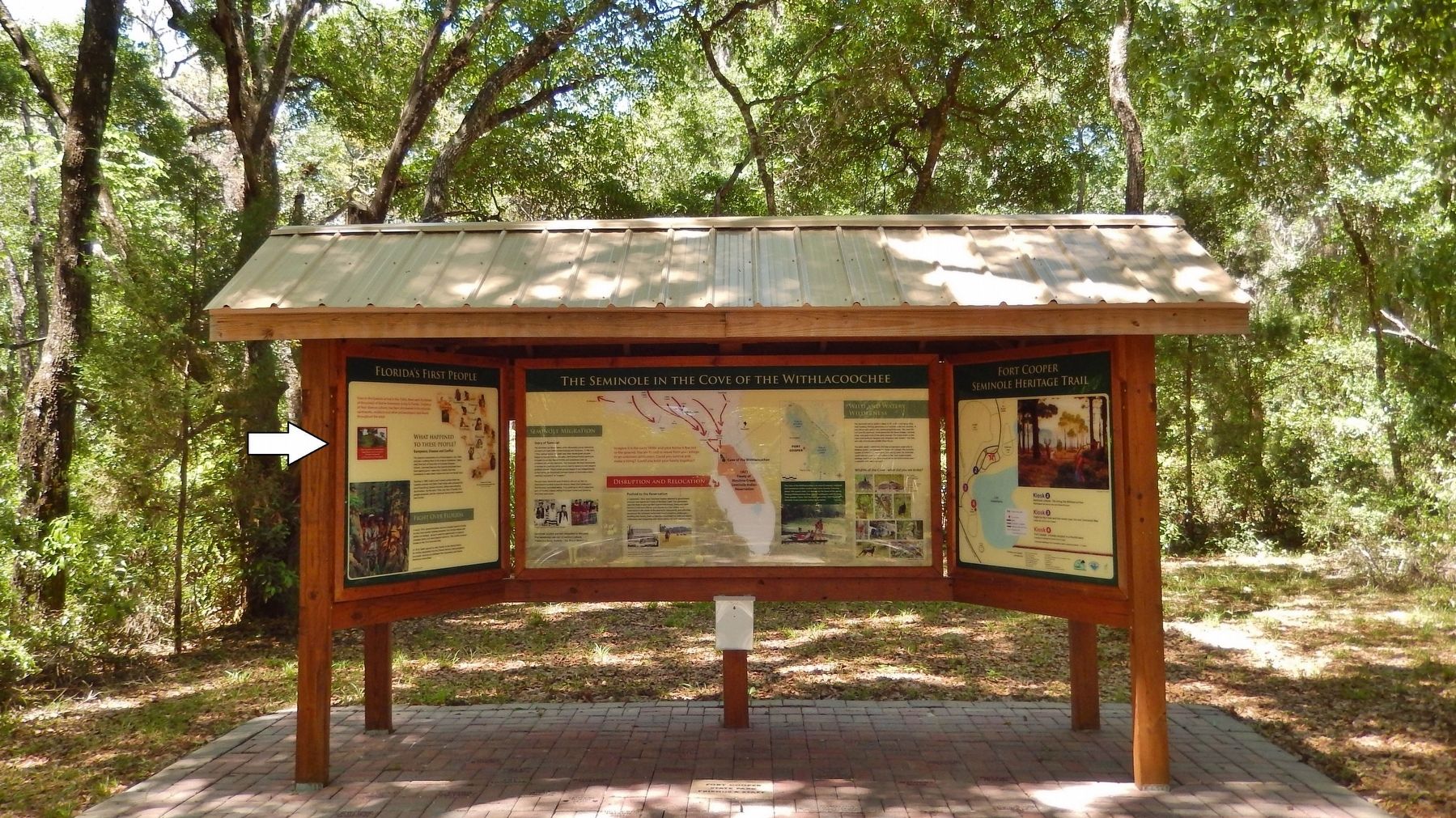Near Inverness in Citrus County, Florida — The American South (South Atlantic)
Florida's First People
Seminole Heritage Trail
What Happened to these people?
Europeans, Disease and Conflict
The Spanish colonization of La Florida began in the 1500s and was a striking blow to the original inhabitants. Many died from lack of immunity to European diseases. Others — unarmed because the Spanish prohibited them from owning guns — were slain in battle, fled their homelands or were taken captive and put into forced labor.
Starting in 1680, English and Scottish soldiers from the Carolina colonies and their Creek Indian allies attacked the once-flourishing Spanish missions, killing and enslaving local Indians. By the early 1700s, very few of Florida's first people remained, and the Seminole started their migration into Florida.
Fight Over Florida
In early 1818, General Andrew Jackson invaded Spanish Florida to stop cross-border violence between the Florida Indians and settlers in Georgia. Jackson used the opportunity to capture runaway slaves and seize Spanish territory. This conflict became known as the First Seminole War.
In 1819, Spain agreed to cede Florida to the United States. As settlers expanded into the Florida Territory and population increased, altercations between the newcomers and Native Americans intensified.
Topics and series. This historical marker is listed in these topic lists: Colonial Era • Native Americans • Settlements & Settlers • Wars, US Indian. In addition, it is included in the Former U.S. Presidents: #07 Andrew Jackson series list.
Location. 28° 48.521′ N, 82° 18.248′ W. Marker is near Inverness, Florida, in Citrus County. Marker can be reached from Old Floral City Road, 0.2 miles south of Carnegie Drive, on the right when traveling south. Marker is located within Fort Cooper State Park, along the Seminole Heritage Trail, about 6/10 mile inside the park and a short walk from the parking lot. Touch for map. Marker is at or near this postal address: 3100 South Old Floral City Road, Inverness FL 34450, United States of America. Touch for directions.
Other nearby markers. At least 8 other markers are within walking distance of this marker. The Seminole in the Cove of the Withlacoochee (here, next to this marker); Fort Cooper (about 300 feet away, measured in a direct line); Life Along the Withlacoochee (approx. 0.2 miles away); Old Military Road (approx. 0.4 miles away); War Comes to the Cove (approx. 0.4 miles
away); Lonely Outpost in a Hostile Land (approx. 0.4 miles away); A Costly Florida War (approx. half a mile away); a different marker also named Fort Cooper (approx. 0.6 miles away). Touch for a list and map of all markers in Inverness.
More about this marker. This marker is the leftmost panel of a three-panel interpretive kiosk at this location.
Related markers. Click here for a list of markers that are related to this marker. Fort Cooper, The Seminole Heritage Trail, and the Second Seminole War
Also see . . . First Seminole War. The Seminoles lived in villages in northern Florida. The area was also home to a number of Africans, free African Americans, and runaway African American slaves, all of whom were known as Black Seminoles. In 1818, General Andrew Jackson led troops against Seminole villages on Lake Miccosukee and along the Suwannee River, destroying them as he went. In addition, he seized the Spanish military post at what is now St. Marks and then proceeded to take the Spanish-held town of Pensacola. Jackson’s military successes paved the way for Spain’s agreement to relinquish its territory in Florida to the United States under the terms of the 1819 Transcontinental Treaty. (Submitted on April 17, 2019, by Cosmos Mariner of Cape Canaveral, Florida.)
Credits. This page was last revised on November 25, 2020. It was originally submitted on April 16, 2019, by Cosmos Mariner of Cape Canaveral, Florida. This page has been viewed 570 times since then and 68 times this year. Photos: 1, 2, 3, 4, 5. submitted on April 17, 2019, by Cosmos Mariner of Cape Canaveral, Florida.
